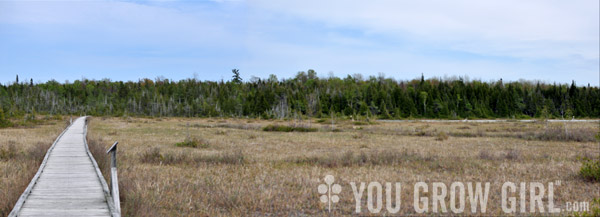
The following is part 2 in a series on a trip I took up north to Ontario, Canada’s Bruce Peninsula to see carnivorous plants growing in the wild.
We left the beach area, and doubled back to the Oliphant Fen, which we had passed on the way in (see map here). Note that there is no real parking area for the fen, just a little divot in the road alongside with space for 2 cars. If you’re looking for a public bathroom, there is a porta-potty at the beach. That’s about it for amenities so I suggest packing water and a picnic lunch and/or snacks.
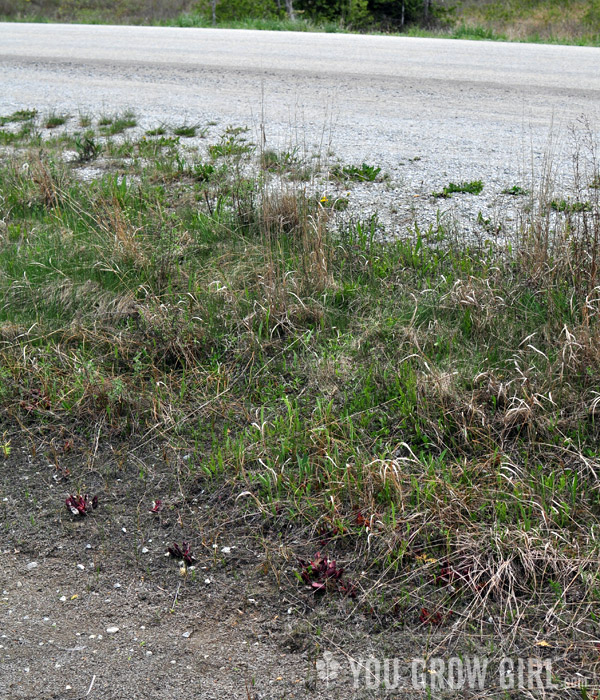
I was barely out of the car before I spotted them dotting the ditch just feet from the road: bright red Northern Pitcher plants (Sarracenia purpurea), one of the carnivorous plants we had come to see.
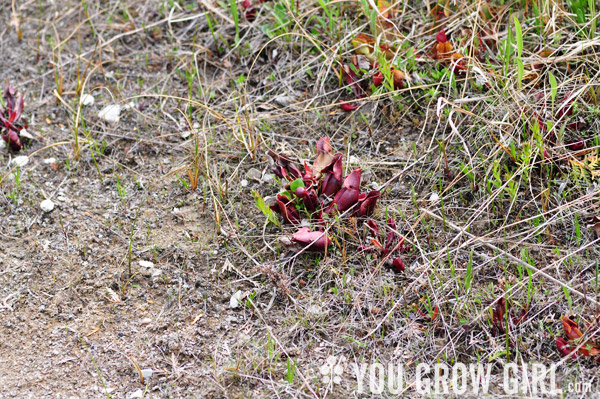
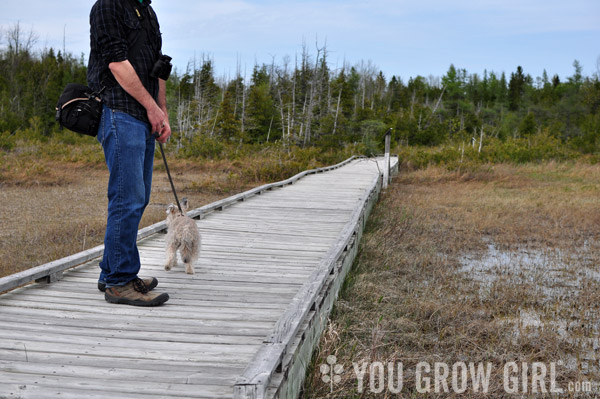
Dogs are allowed provided that you keep them on a leash and stick to the boardwalk path.
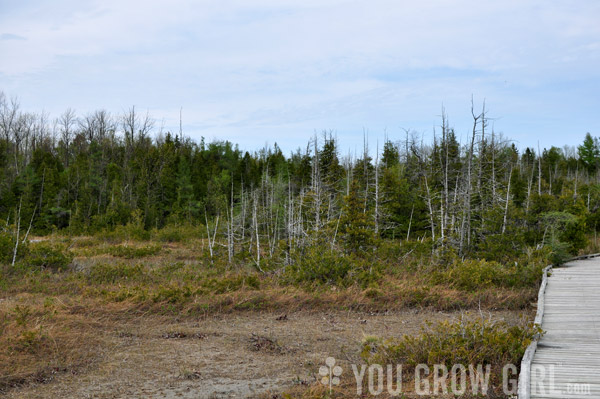
The fen is protected by a long boardwalk to prevent visitors from trampling all over protected plants. It’s a fairly wide wooden boardwalk that I believe would be stable enough to support a wheelchair (the other boardwalk fen we visited is thin and rickety). The boardwalk travels in a semicircle over the wetland and through the trees.
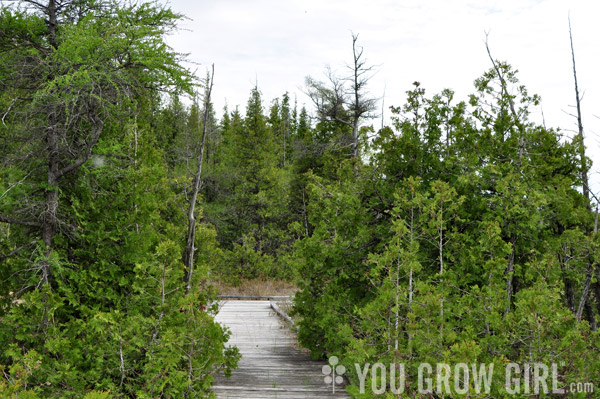
Beautiful dwarf cedars and tamarack trees populate parts of the fen.
According to information boards installed along the boardwalk, the fen is approximately 8km total and extends at times into the nearby forest and marshlands. The Oliphant Fen is unusual in that it does not contain peat and is instead, a fen meadow, which is a transitional stage short of a true fen. They believe that this is because water is constantly moving through the fen and it is sometimes flushed out by Lake Huron. This particular part of Ontario is flush with limestone, which according to the literature, “…gives up some of its calcium carbonate to the cold ground water before it percolates over the fen.” I find this fact confusing as I had come to believe that carnivorous plants required a peat-based, low pH soil to thrive. To be honest, I’m still trying to wrap my head around this new information as it has completely undone everything I thought I knew about carnivorous plants and fens. Sometimes these sorts of trips reveal details that allow for a better understanding as to how to grow the plants I love, and other times they create further confusion on the way towards eventual clarity.
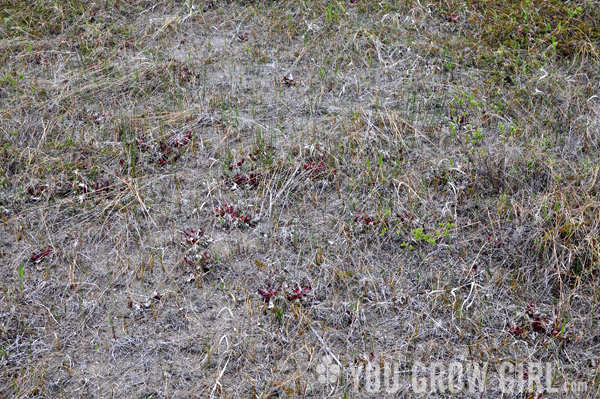
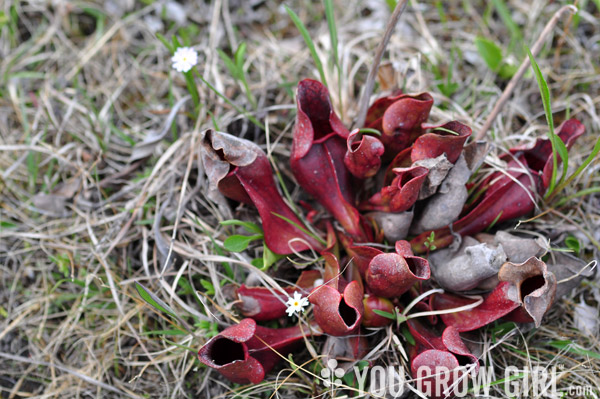
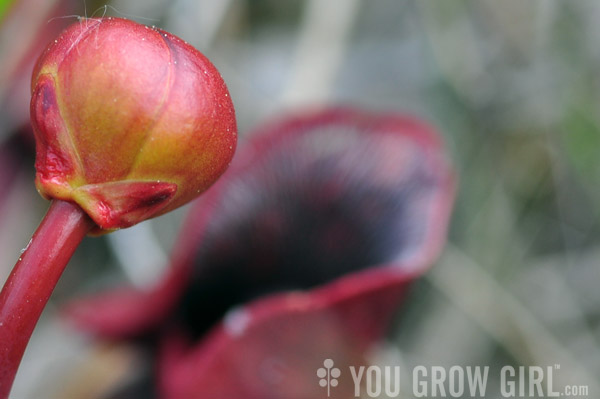
Sarracenia purpurea flower bud.
Confused and eager to learn more, I turned to my carnivorous plant books and found an answer in “The Savage Garden” by Peter D’ Amato. On page 75, he explains that while Sarracenia purpurea are normally found in acidic bogs, there is a more brittle form called “rupicola” that is adapted to the alkaline fens around the Great lakes. Apparently, these plants are able to revert when placed into an acidic environment.
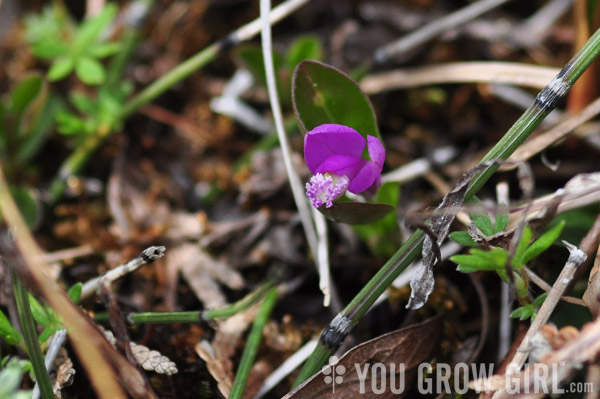
Fringed Polygala (Polygala paucifolia) is a tiny little thing that I first encountered on a previous trip to the area many years ago. It first caught my eye because it looks like an orchid, but alas, is not. There are many orchids that can be seen growing wild in the Bruce Peninsula, unfortunately, we were too early to catch them in bloom this year. I suggest going in mid-June.
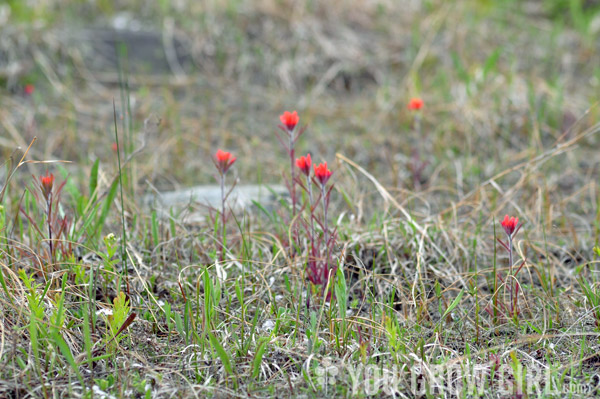
A field of bright red Indian Paintbrush (Castilleja spp.) was coming into bloom across the road from the fen.

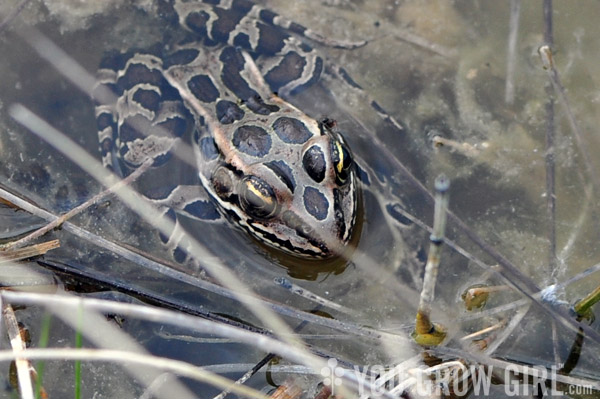
There are lots of reptiles and amphibians like this Northern Leopard Frog (Lithobates pipiens) that make the fen their home. Davin saw a garter snake, but I missed it.
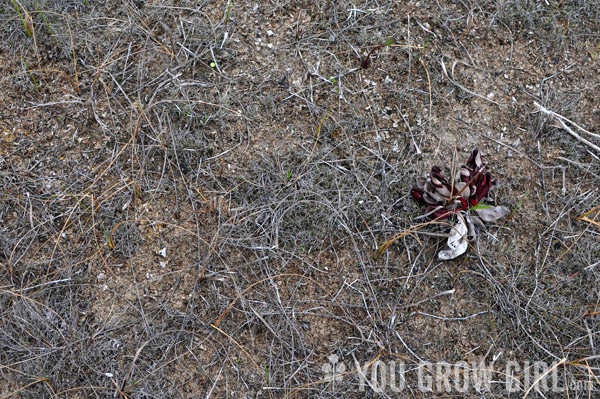
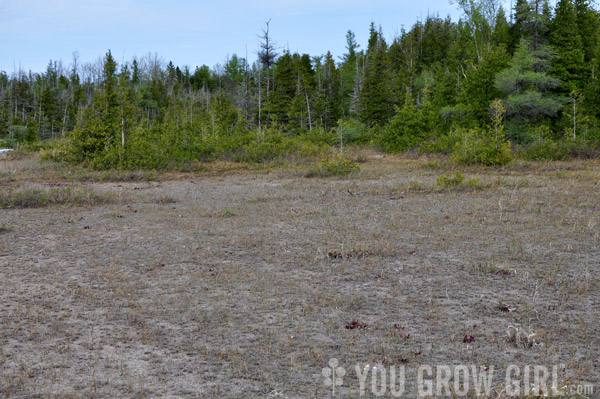
The fen was surprisingly dry in some areas. It was a lot dryer than I expected it to be at this time of year and definitely dryer than another fen that we visited on the same day (more to come). I suspect this is why we didn’t see any sundews here. Believe me, I looked carefully and I also spoke to a group that were walking the boardwalk at the same time counting plants. They didn’t see any here either.
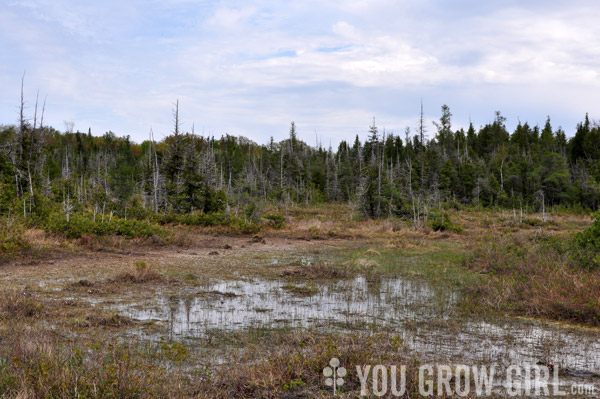
And then other parts were very wet.
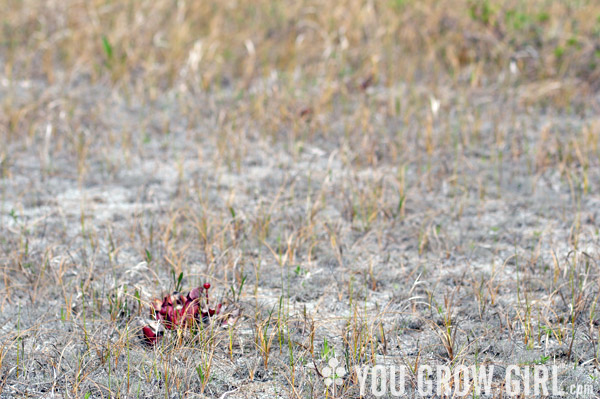
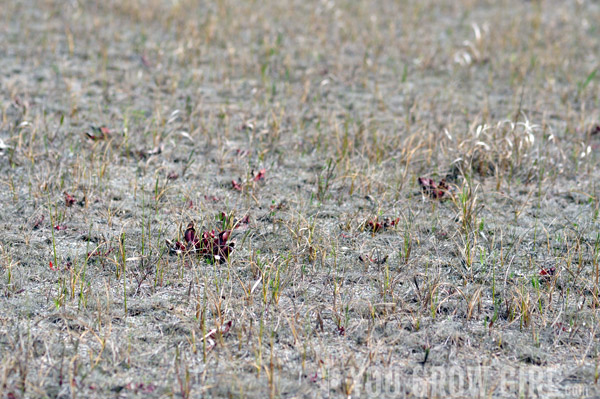
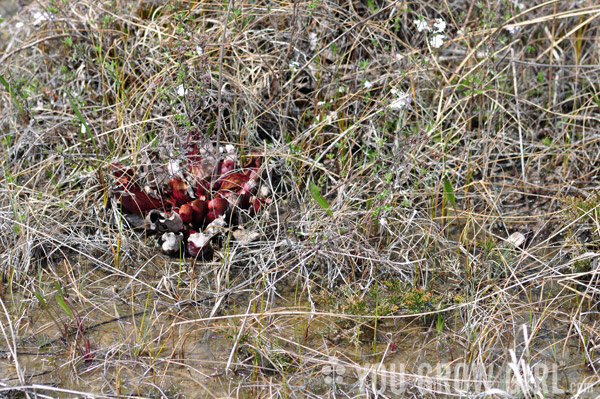
The white blobs in this image are the bird’s eye primrose (Primula mistassinica)
that we also spotted at the beach. According to the plant ID boards provided on site, the season is a bit behind as these flowers should have been done by now and others that were not in bloom should have been.

So cool! Thanks for taking us along through your text and photos.
Fascinating! Your photos and narrative make for a great virtual tour.
The red colour of the Pitcher Plant is so striking. It makes me think of raw liver.